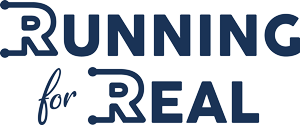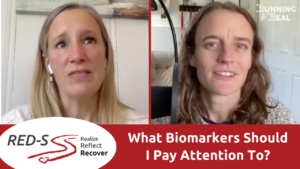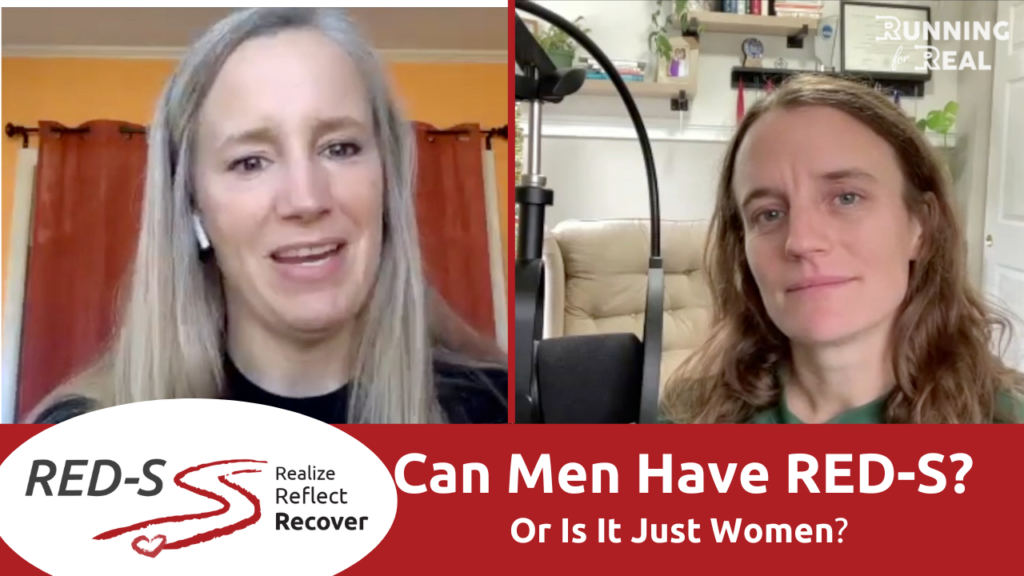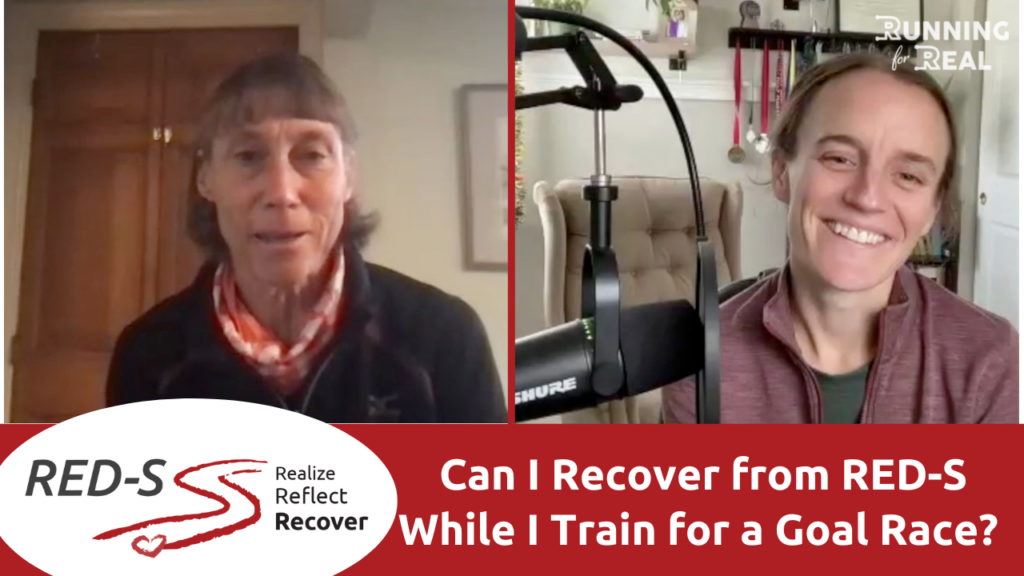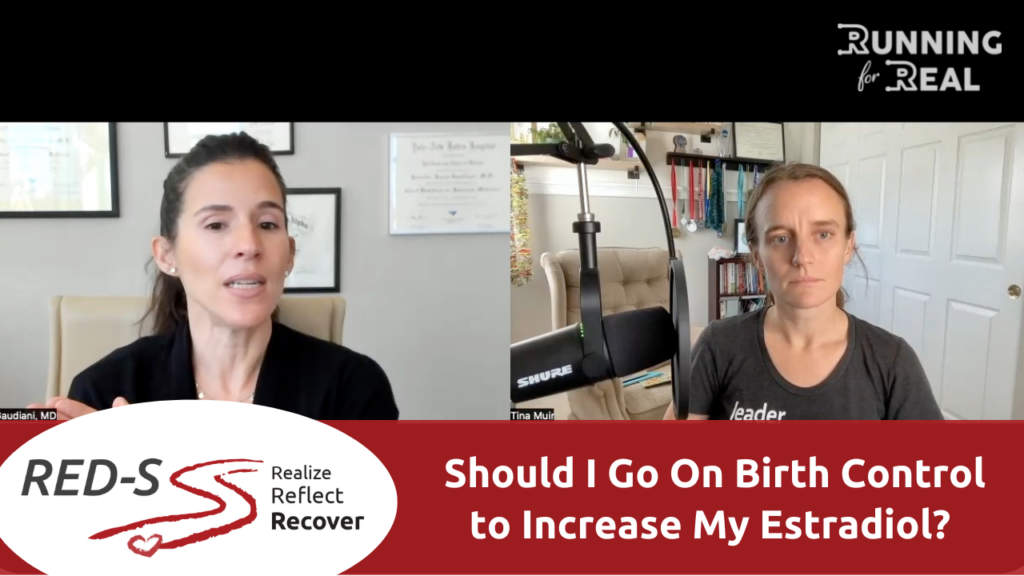Blood tests may have shown that your iron is low. Why is that? Does a low ferritin level usually go hand-in-hand with RED-S / REDs (Relative Energy Deficiency in Sport)?
What should your ferritin level be? What can you do to get it to where it should be and keep it there? Or if you haven’t had your ferritin level tested, what is a warning signal that you should have it checked?
Sports nutritionist Nancy Clark provides clear, actionable advice about the causes and treatment of anemia, which affects many female athletes.
Read the transcript
[Tina] How is my ferritin or iron level tied to amenorrhea or RED-S?
[Nancy] Low ferritin is a symptom of low iron intake, and so if you are not eating red meat, which many people with RED-S do not do; if you are not eating breakfast cereal that’s enriched with iron; if you are not cooking in a cast iron skillet; the chances are your iron intake is quite low and so it’s no wonder that you have iron deficiency. And that is showing up in reduced serum ferritin.
So I would say that reduced ferritin is just a symptom of an unbalanced diet. And the way to correct that is to start cooking in a cast iron skillet; to eat breakfast cereals that are enriched with iron, so instead of the all-natural Kashi, you have General Mills or Post or Kellogg’s cereals that have things added to them like iron and B vitamins and zinc and other nutrients; or at least mix and match Cheerios and your all-natural granola or something.
But I’d look at your iron intake, and if you’re in a hole, if your ferritin is low, in order to get out of that hole, you really need to take an iron supplement. But once you’re out, then you want to maintain a higher iron intake. People say, “Oh, but I eat lots of spinach.” The iron that’s in spinach is poorly bioavailable, so you can eat a lot of spinach, but that’s not why you’ll be strong to the finish. There are other good things in spinach, too. So I would look at alternate sources of iron, and that could be dark meat chicken; it could be salmon. The darker the meat, the more iron there is; the darker the food, the more iron that there is. So spinach has more iron than lettuce does, but the iron that’s in plants is not absorbed as well as the iron that’s in the animal products.
[Tina] Thank you for sharing that. I think that’s an important piece to mention. And would you say that typically someone who does have RED-S tends to have low iron? Is it possible to have one without the other or do they generally go hand in hand?
[Nancy] I’m sure that you could have one without the other; I mean, sometimes people have low iron because they have celiac disease and they don’t absorb iron. There are other reasons besides RED-S that people would have low iron stores, but you want to tune into it.
Anemia is a real problem among female athletes because so many females do not consume as much red meat or animal protein as male athletes do, for example. And so if you’re feeling that you just can’t keep up with people like you used to, like you’re running up a hill with your teammates that you’ve always run up hills with and now you’re just at the end sucking air, what happened? Maybe you’ve become anemic or have low iron. So you certainly want to monitor it and have blood tests done routinely.
[Tina] Is there a number you typically tell people to keep their ferritin at?
[Nancy] Well, certainly more than 20. Some people say about 40, some people say 70. Each person’s body is kind of different, but if it’s really low, it will impact your performance, and why do that to yourself?
[Tina] Okay, thank you for that.
check it out
Recovering from RED-S is hard. It’s even harder if you’re working through it alone. Even if you have professional support, they’re not available 24-7, and that can lead to going down search engine rabbit holes that have the potential to derail everything.
Our online resource, RED-S: Realize. Reflect. Recover, will answer all those questions swimming around in your head about recovery. It will give you the opportunity to connect with the experts you’ve come to know here, and to surround yourself with a community of others who are going through it too. THANK YOU! to Athletic Greens and Tracksmith for supporting this YouTube series and RED-S: Realize. Reflect. Recover.
Go to athleticgreens.com/reds to get five free travel packs of AG1 and a free one year’s supply of vitamin D3+K2 with your subscription!
When you go to https://tracksmith.com/tina and use the code TINA15 at checkout, you’ll get free shipping and Tracksmith will donate 5% of your order to Rising Hearts, the Indigenous-led nonprofit founded by Jordan Marie Daniels.
more about nancy:
Nancy Clark, MS, RD, CSSD has a successful sports nutrition private practice in the Boston area. She has years of experience helping active clients—from “ordinary mortals” to Olympians—win with good nutrition. Her best-selling “Nancy Clark’s Sports Nutrition Guidebook” has sold over 800,000 copies. It is a popular resource for reliable sports nutrition information, as is her online sports nutrition workshop. Nancy is a sought-after nutrition counselor for athletes who struggle with food-and weight issues, as well as a nutrition speaker popular with dietitians, trainers, coaches, and other health professionals. You can find her at https://nancyclarkrd.com/.
